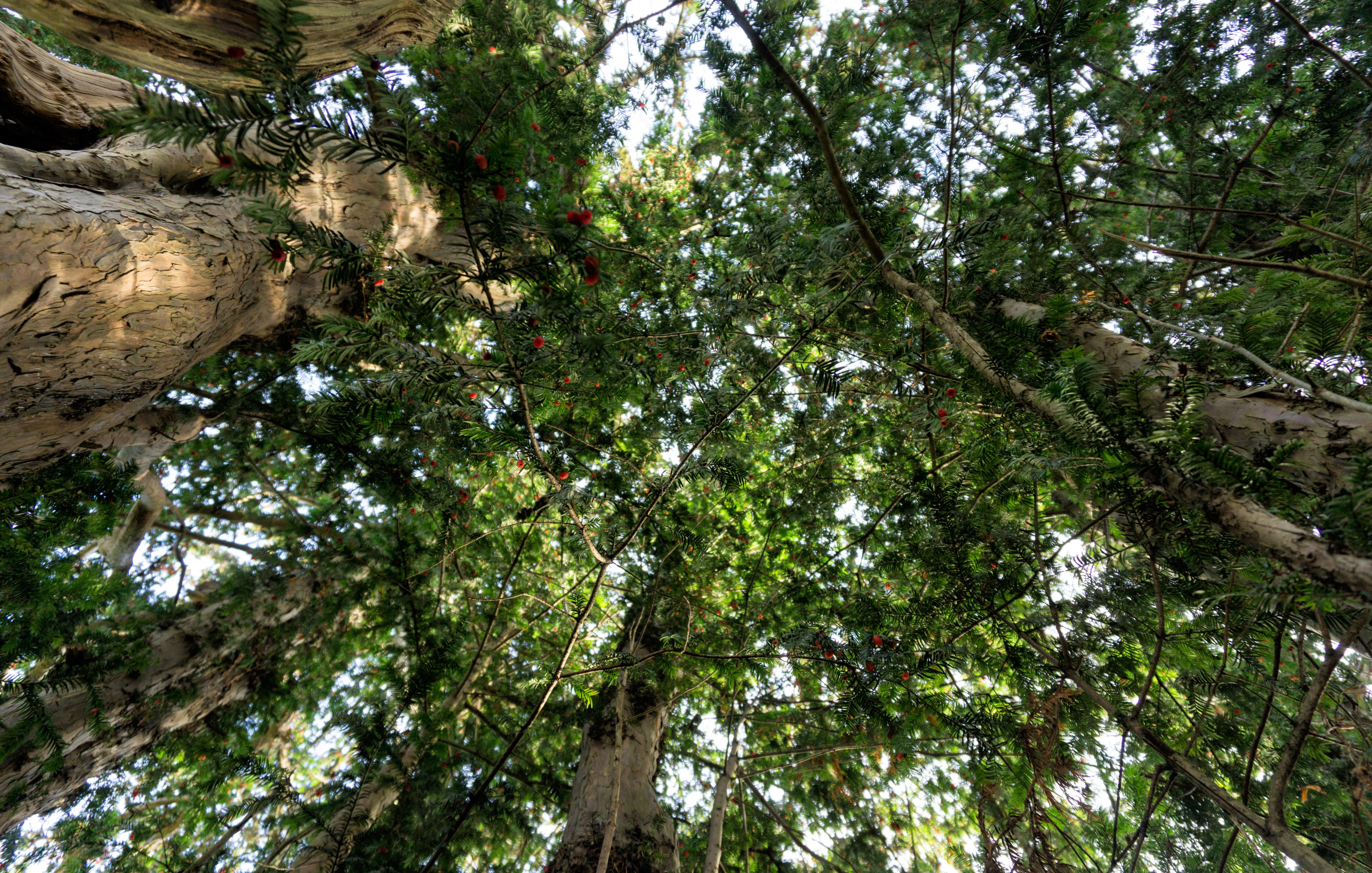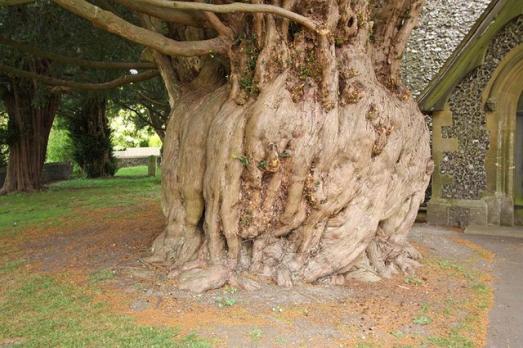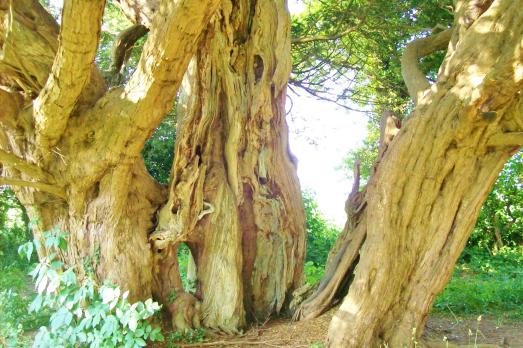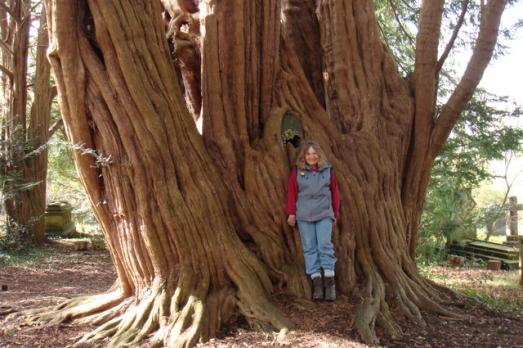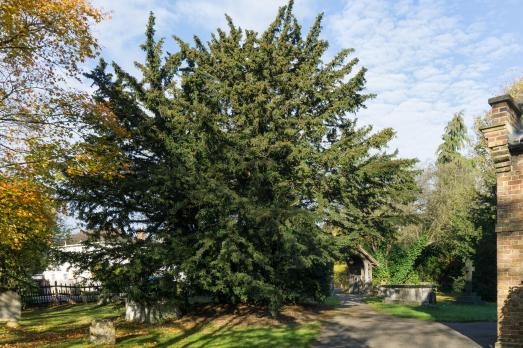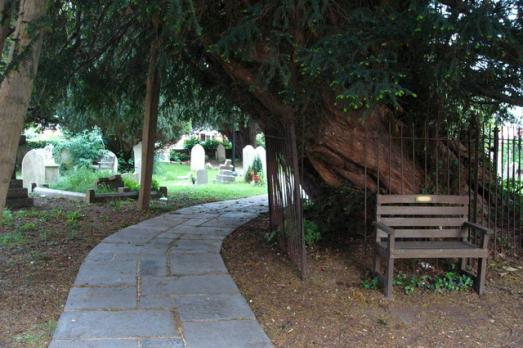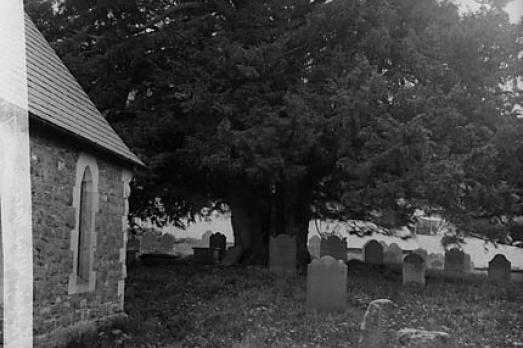
Twice as old as the church
The church of St George, Crowhurst was built in the early 14th century, but its ancient yew is thought to be double the church's age. The tree is rich in tales and folklore. A door was attached 1820 and villagers held tea parties in its hollow trunk. A cannon ball was found embedded within the trunk, thought to be from the English Civil War. The yew has been documented since 1630 and is one of the 50 Great British Trees chosen to celebrate the Queens jubilee.

